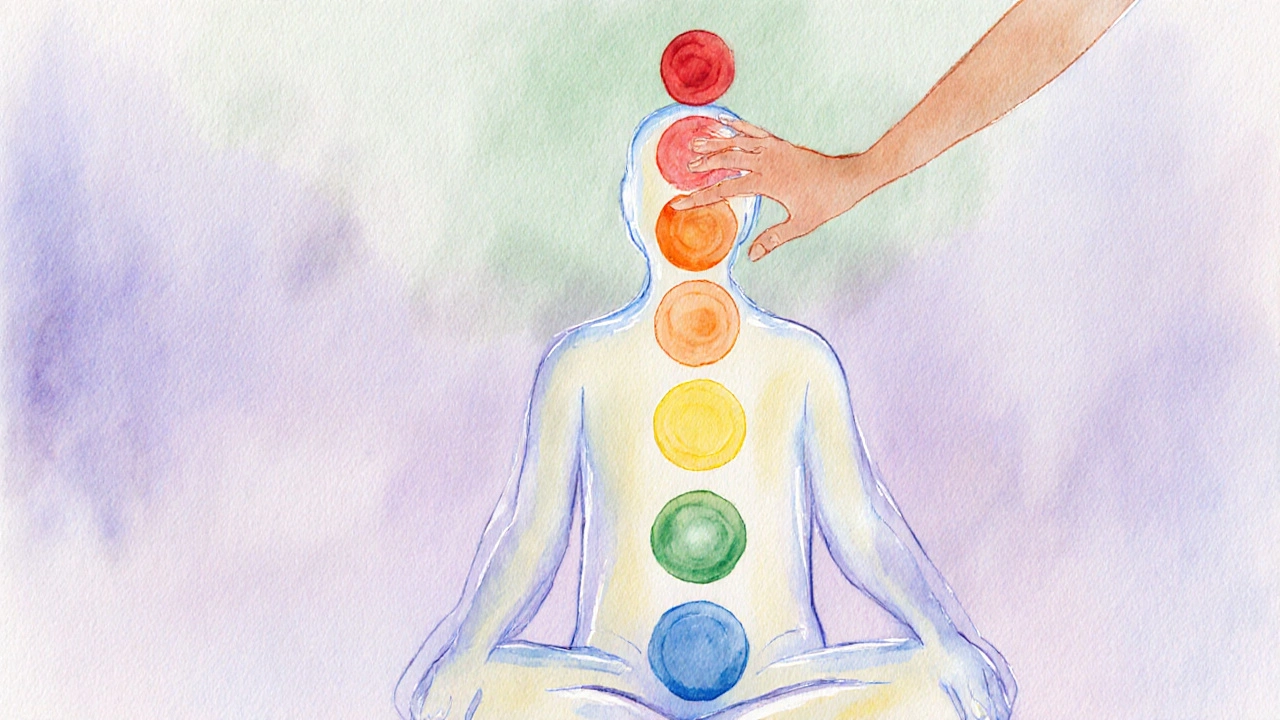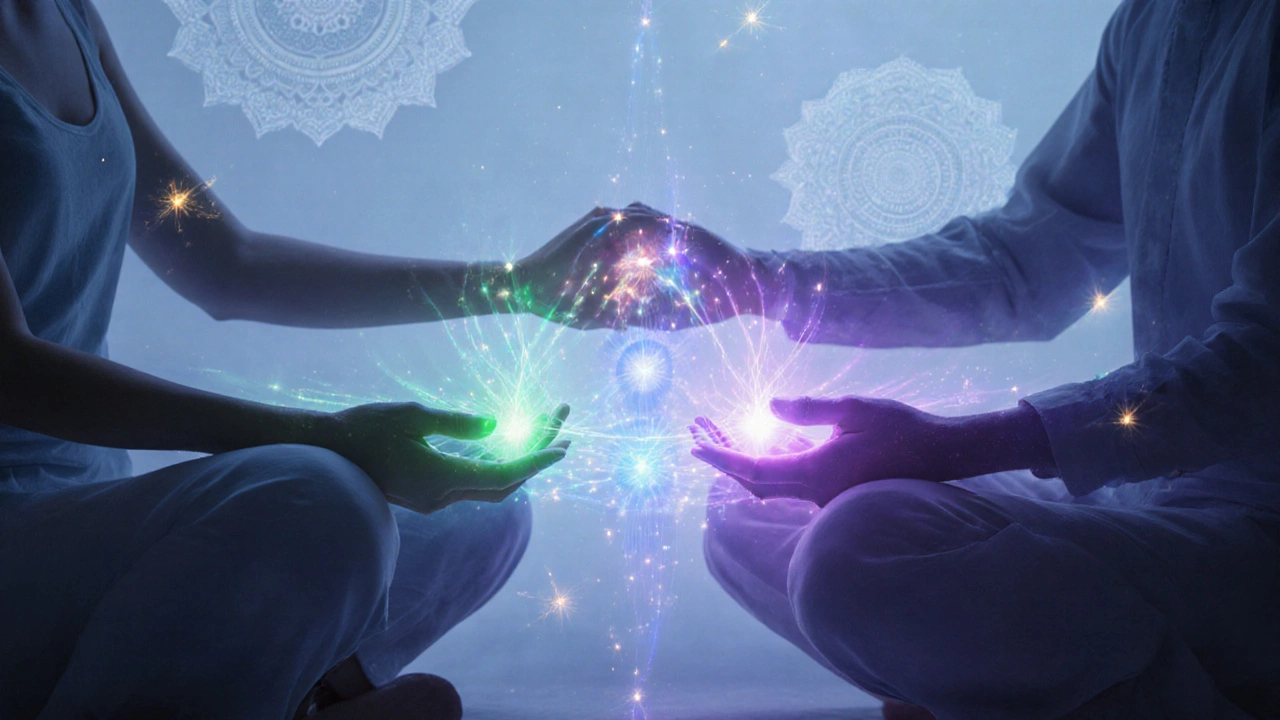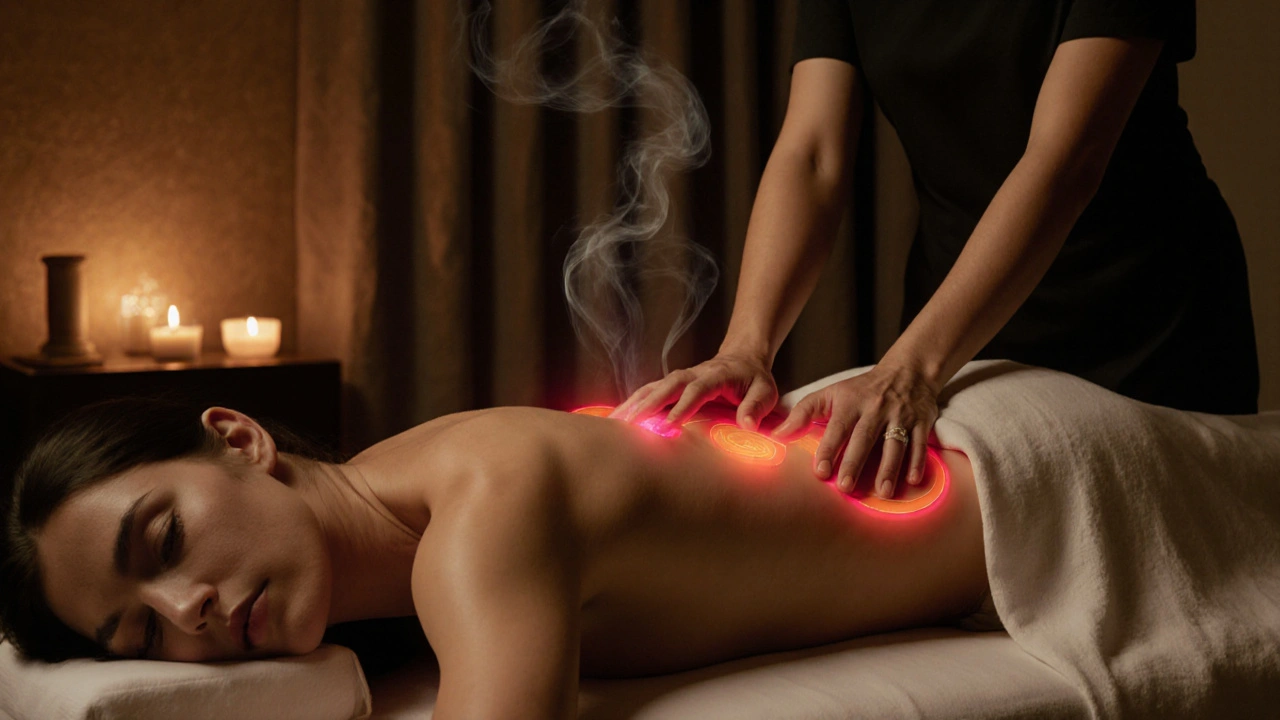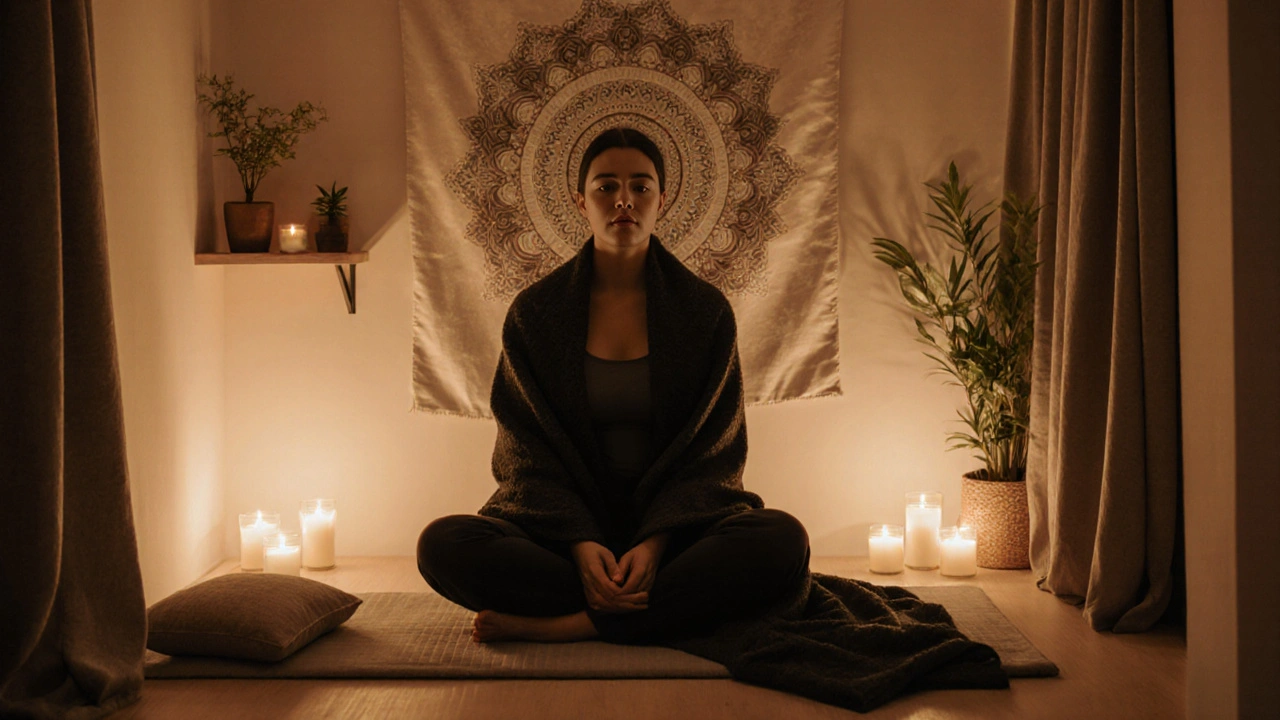Key Takeaways
- Tantric massage and chakra healing both aim to balance the body's subtle energy.
- Massage techniques stimulate specific energy centers, helping Kundalini rise safely.
- Combining breathwork, intention, and touch creates deeper relaxation and spiritual clarity.
- Choosing a qualified practitioner ensures safe practice and authentic results.
- Understanding the difference between tantric massage and related modalities helps you pick the right session for your goals.
When you hear tantric massage, you might picture a sensual indulgence, but its roots go deep into ancient Indian traditions that view the body as a map of energy. Tantric Massage is a holistic bodywork practice that blends rhythmic pressure, breath synchronization, and focused intention to awaken and balance the seven main chakras-the spinning wheels of subtle energy that run along the spine. Chakra Healing is the process of clearing, aligning, and energizing these centers using techniques like visualization, sound, and physical touch. Together, they form a powerful partnership: the massage supplies the kinetic stimulus, while chakra work provides the energetic map.
Understanding Tantric Massage and Chakra Healing
Tantric massage originated from the Tantra tradition, which teaches that pleasure can be a gateway to spiritual awakening. Practitioners use slow, deliberate strokes, often synchronized with the client's breathing, to move prana-the life force-through the body's meridians and chakras. Chakra healing, on the other hand, focuses on the seven primary energy centers: Root, Sacral, Solar Plexus, Heart, Throat, Third‑Eye, and Crown. Each chakra corresponds to physical organs, emotional states, and spiritual aspects. When these centers are blocked or imbalanced, you may feel fatigue, anxiety, or a sense of disconnection.
By aligning the tactile sensations of massage with the subtle intentions of chakra work, you create a feedback loop: physical pressure opens pathways for prana, while the practitioner’s focus directs that prana to specific chakras, encouraging release and integration.
Benefits of Combining Tantric Massage with Chakra Healing
- Deep Relaxation: The rhythmic nature of the massage lowers cortisol, while chakra alignment calms the nervous system.
- Emotional Release: Unresolved emotions often lodge in the lower chakras; targeted pressure helps exhale pent‑up feelings.
- Enhanced Energy Flow: Opening the meridians clears blockages, allowing Kundalini energy to rise gradually.
- Improved Intimacy: Couples who experience tantric sessions together report higher trust and communication.
- Spiritual Insight: Many clients describe vivid visualizations or a sense of expanding consciousness during or after the session.
Take Maya, a busy professional who suffered chronic lower‑back pain. After a series of sessions that combined root‑chakra grounding techniques with deep tissue strokes, she not only reported pain relief but also felt more grounded in her daily life, attributing the change to the “energy reset” she experienced.
Typical Types of Tantric Sessions Focused on Chakra Work
Practitioners tailor their approach based on client goals. Here are three common formats you’ll encounter:
- Full‑Body Chakra Journey: A 90‑minute session that moves sequentially from the Root to the Crown, using specific hand placements and visualizations for each chakra.
- Targeted Chakra Release: A 60‑minute session that zeroes in on one or two problem areas-like the Sacral for creativity blocks or the Heart for emotional wounds.
- Couple’s Energy Sync: Two people receive simultaneous massage while a facilitator guides a joint breathing exercise, aiming to align their chakras for deeper connection.
Each style incorporates breathwork, gentle stretching, and a closing meditation to seal the energetic work.

How to Find Qualified Tantric Massage Practitioners
Finding a trustworthy practitioner is crucial. Follow these steps:
- Search for certified tantric therapists on reputable directories; look for credentials such as “Certified Tantra Practitioner” or “Energy Healing Specialist.”
- Read client testimonials that mention chakra work specifically; vague “great massage” reviews may not indicate the needed expertise.
- Verify that the therapist follows a consent‑first policy-clear communication about boundaries and intentions is a hallmark of ethical practice.
- Ask about their training in related modalities like Reiki, Ayurveda, or Kundalini yoga, which often complement chakra work.
- Consider a brief consultation call to discuss your goals and gauge if their approach aligns with your needs.
What to Expect During a Tantric‑Chakra Session
A typical session unfolds in four phases:
- Intention Setting (5‑10 minutes): You and the therapist discuss what you hope to release or awaken. The therapist may light a candle, play soft chanting, or guide a short breathing exercise.
- Grounding & Warm‑Up (10‑15 minutes): Gentle strokes along the feet, legs, and lower back activate the Root chakra, providing a sense of safety.
- Energy Flow & Chakra Focus (45‑60 minutes): The therapist moves up the spine, using specific hand placements-e.g., circular motions over the Solar Plexus for personal power, heart‑centered strokes for emotional balance. Visual cues like “imagine a green light expanding from your heart” help direct prana.
- Closing Integration (10‑15 minutes): A seated meditation or lying‑down visualization seals the work. You may receive a simple mantra or crystal to keep at home.
Clothing is usually minimal but respects modesty; you’ll typically be draped with a sheet and asked to remain semi‑nude for full contact. The therapist maintains a professional demeanor, focusing on energy rather than erotic stimulation.
Pricing, Booking, and Session Length
Pricing varies by location and practitioner experience. In major cities, a 90‑minute full‑body chakra session ranges from $120 to $250. Couples’ sessions often cost $180‑$300. Many therapists offer a discounted introductory hour, followed by package rates for multiple sessions, encouraging ongoing energy work.
Booking is usually done online through a secure portal or via email. Expect to fill out a brief health questionnaire-this helps the therapist customize pressure levels and avoid contraindications (e.g., recent surgeries, severe hypertension).

Safety Tips for a Secure Experience
- Confirm the therapist’s credentials and ask about their training in anatomy and energy work.
- Never undergo deep pressure if you have acute injuries; inform the practitioner of any medical conditions beforehand.
- Set clear boundaries about touch areas; reputable therapists respect a “no‑go‑zone” list.
- Stay hydrated before and after the session to help flush released toxins.
- After the session, allow at least 30 minutes of quiet time to integrate the experience; avoid intense exercise or heavy meals.
Comparison Table: Tantric Massage vs. Reiki for Chakra Healing
| Aspect | Tantric Massage | Reiki |
|---|---|---|
| Physical Contact | Full‑body touch, pressure, breath sync | Light hand placement, no deep pressure |
| Primary Focus | Energy flow through meridians + chakra alignment | Universal life force transmission |
| Typical Session Length | 60‑90 minutes | 30‑60 minutes |
| Ideal For | Those seeking sensual‑spiritual integration, deep muscle release | Clients preferring gentle, non‑touch energy work |
| Cost (US) | $120‑$250 per hour | $80‑$150 per hour |
Frequently Asked Questions
Is tantric massage only about sexual pleasure?
No. While sensuality is a component, the core purpose is to move prana through the chakras, fostering emotional balance and spiritual insight.
Can I practice chakra healing on my own after a session?
Absolutely. Simple breathwork, visualization of each chakra’s color, and gentle self‑massage can reinforce the therapist’s work.
What if I feel intense emotions during the massage?
Emotions are a sign of released energy. The therapist should create a safe space, offer grounding techniques, and allow you to process at your own pace.
Do I need any special attire?
Typically you’ll be asked to wear loose, comfortable clothing that’s easy to remove. The therapist provides a sheet for modesty.
How often should I schedule sessions?
Many clients start with weekly sessions for a month, then space out to bi‑weekly or monthly as the energy stabilizes.
Take the Next Step
If you’re curious about how the combination of touch and chakra work could reshape your well‑being, start by researching certified tantric therapists in your area. A brief introductory call can clarify whether their style matches your goals. Remember, the journey is as important as the destination-allow yourself the space to explore, breathe, and let the energy flow.





Nishad Ravikant
October 19, 2025 AT 20:53Balancing chakras through breath and touch can truly reset your inner battery.
S.l F
October 20, 2025 AT 00:13Dear fellow seeker, I applaud your concise observation regarding the synergistic effect of breathwork and tactile stimulation. It is essential, however, to approach such practices with a clear intention and a respectful boundary framework. By establishing a mutual consent dialogue, both practitioner and client can navigate the subtle energetic currents safely. Moreover, a thorough preliminary assessment of health conditions ensures that the session proceeds without inadvertent strain. I would recommend consulting reputable directories that list certified tantric therapists, as this adds a layer of professional accountability. In addition, maintaining post‑session hydration aids the body in metabolising released toxins, thereby consolidating the therapeutic benefits. May your journey toward energetic harmony be both enlightening and securely grounded.
Michael Allerby
October 20, 2025 AT 03:50Hey everyone, let’s dive a bit deeper into why the combo of tantric massage and chakra work can feel like a cosmic reboot. First off, the rhythmic pressure of the massage acts like a drumbeat that nudges prana right into the meridian pathways – think of it as oiling the gears of an old clock. When the therapist syncs each stroke with your inhale and exhale, you’re literally breathing life into those energy wheels, and that can spark subtle vibrations all the way up to the crown. The root chakra gets a solid grounding foundation, which then lets the sacral and solar plexus open up without feeling shaky or over‑stimulated. As the heart chakra expands, you often notice a warm, pink glow of openness that makes interpersonal connections feel effortless. A well‑timed breath pause at the throat chakra can clear mental static, making it easier to articulate thoughts after the session. The third‑eye activation frequently brings vivid visualizations – some folks describe it as “seeing the colors of their emotions” or “watching a light show in their mind’s eye.” By the time you reach the crown, the cumulative effect can be a gentle feeling of spaciousness, as if the ceiling of your consciousness has lifted.
Practically speaking, make sure the practitioner has training in both anatomy and subtle energy modalities; this dual expertise prevents accidental bruising while steering prana correctly. Ask them about their certification – terms like “Certified Tantra Practitioner” or “Energy Healing Specialist” are good markers. Don’t shy away from a pre‑session chat; you can outline specific goals like “release creative block” or “strengthen emotional resilience.” During the session, stay present with the sensations; if a particular area feels tense, visualize a corresponding color dissolving the knot – green for heart, orange for sacral, etc. Afterward, give yourself a quiet half‑hour to integrate – no scrolling, no heavy meals, just some water and perhaps a simple mantra.
Finally, consistency is key: a weekly session for a month can lay down a solid energetic foundation, after which bi‑weekly or monthly visits keep the flow smooth. Keep a journal of any shifts in mood, pain levels, or intuition; you’ll be amazed at the patterns that emerge over time. Happy healing, and may your chakras spin in perfect sync!
Devin Tankersley
October 20, 2025 AT 08:00This whole “colorful vibe” spiel is nothing but pseudo‑science draped in New Age fluff. You’re selling a feel‑good fantasy while ignoring basic physiological facts; there’s no evidence that “prana” suddenly pops into your spine because someone rubs your back. The so‑called “energy wheels” are just a marketing gimmick to charge premium rates, preying on vulnerable seekers. I’ve seen dozens of clients leave these sessions more confused, with heightened anxiety about invisible chakras. If you really cared about health, you’d recommend evidence‑based modalities like physical therapy or CBT, not mystical hand‑waving. Stop glorifying unverified practices and let people make informed choices without your glittery hype.
Mathew Thomas
October 20, 2025 AT 12:10Imagine the soul as a lantern; each chakra is a candle, and tantric touch is the wind that steadies the flame, igniting a journey toward luminous self‑realization.
Jennifer bomabebe
October 20, 2025 AT 16:20Esteemed colleague; your metaphorical depiction, whilst poetically resonant!!!, warrants a slightly more rigorous elaboration. The notion of “candle‑like chakras”-though evocative-could benefit from a clarifcation regarding the mechanistic interplay betweeen somatic pressure and subtle energetics. Moreover, ensuring that participants maintain appropriate drapery protocols, as well as adherence to informed‑consent procedures, serves to augment both safety and ethical propriety. In sum, the artistic flourish you employ appreciates the transcendental dimensions, yet must be balanced with scrupulous practical considerations; therefore, a comprehensive guidebook would be most advantageous.
Kristen O.
October 20, 2025 AT 20:30⚠️🧠 ROI‑centric critique: the session’s perceived “benefits” are merely placebo‑driven, with neuro‑chemical upticks akin to dopamine spikes from novelty exposure. Leveraging psych‑lexicon, we observe that the “energy transfer” narrative functions as a high‑frequency rebranding of somatic stimulation, lacking verifiable metrics. Hence, the cost‑benefit analysis skews negative when accounting for opportunity cost and unquantified risk. 📊💸